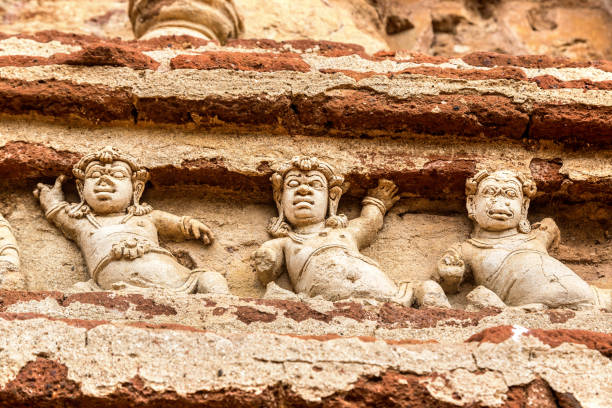Polonnaruwa Archaeological Museum: Gateway to Sri Lanka’s Glorious Past

Tivanka (Thivanka) Image House in Polonnaruwa Archaeological Museum, Sri Lanka
Nestled amidst the ancient ruins of the historic city of Polonnaruwa in Sri Lanka lies the Polonnaruwa Archaeological Museum, a treasure trove of artifacts, relics, and historical exhibits that offer a fascinating glimpse into the island’s rich cultural heritage and glorious past. Situated within the UNESCO World Heritage Site of Polonnaruwa, the museum serves as a gateway to the ancient kingdom’s storied history, showcasing the achievements of its rulers, artisans, and inhabitants through the ages.
Historical Context:
Polonnaruwa rose to prominence as the capital of Sri Lanka during the 11th to 13th centuries CE, serving as the seat of power for successive Sinhalese monarchs and witnessing a flourishing of art, architecture, and culture. The city’s archaeological remains, which include grand palaces, intricately carved temples, and colossal statues, bear testimony to its former glory and enduring legacy as a center of civilization in South Asia.
Exhibition Highlights:
The Polonnaruwa Archaeological Museum houses a vast collection of artifacts spanning the city’s illustrious history, from its earliest settlements to its zenith as a cosmopolitan capital. Exhibits are organized thematically, allowing visitors to explore different aspects of Polonnaruwa’s heritage, including its political history, religious traditions, and artistic achievements.
One of the museum’s most prized possessions is the Gal Vihara, a series of rock-cut Buddha statues that rank among the finest examples of Sinhalese sculpture. Carved from a single granite outcrop, the statues depict the Buddha in various poses, including standing, seated, and reclining, showcasing the skill and craftsmanship of ancient artisans.
Educational Experience:
The Polonnaruwa Archaeological Museum offers a unique educational experience for visitors of all ages, providing insights into the cultural, social, and economic life of the ancient city. Interactive exhibits, multimedia presentations, and guided tours enhance the visitor experience, allowing guests to engage with the material in a meaningful and immersive way.
Visitors can learn about the city’s urban planning and architectural marvels, marvel at intricate carvings and inscriptions, and gain a deeper understanding of the religious beliefs and practices that shaped everyday life in Polonnaruwa. The museum also serves as a hub for research and scholarship, facilitating studies in archaeology, history, and art history for academics and enthusiasts alike.
Preservation and Conservation:
Efforts to preserve and protect Polonnaruwa’s archaeological treasures are paramount, with the museum playing a vital role in safeguarding the city’s cultural heritage for future generations. Conservation projects, site maintenance, and public awareness initiatives are ongoing, ensuring that Polonnaruwa’s ancient wonders continue to inspire and captivate visitors from around the world.
Conclusion:
In the tapestry of Sri Lanka’s cultural landscape, the Polonnaruwa Archaeological Museum shines as a beacon of enlightenment, illuminating the achievements of a bygone era and celebrating the enduring legacy of a once-great civilization. Whether exploring its galleries, marveling at its exhibits, or contemplating the mysteries of the past, visitors to the museum are invited to embark on a journey through time and discover the wonders of Polonnaruwa’s glorious heritage. In the hallowed halls of the museum, the echoes of history resound, offering a glimpse into the soul of a nation and the spirit of its people.




